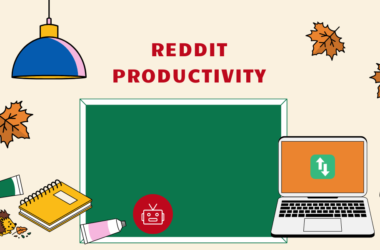Table of Contents Show
Unlock coveted productivity techniques for managers who desire optimum efficiency in a bustling professional environment.
Boost your productivity with these effective techniques for busy managers. Learn how to prioritize tasks, delegate effectively, and stay focused to achieve your goals.
1. Prioritization Techniques
Driven by the need to optimize time usage, understanding prioritization becomes pivotal for busy managers. It’s about separating the vital tasks from the trivial ones, thus making the most out of limited work hours.
Mastering prioritization techniques gives a fresh perspective, enabling managers to take control of their schedules. It’s an indispensable key to unlocking a more productive, organized, and stress-free managerial path.
a. The Eisenhower Matrix
In the hustle-bustle of a manager’s life, the Eisenhower Matrix emerges as a strategic tool, enabling diligent task segmentation according to urgency and importance.
- Understand the four quadrants of the Eisenhower Matrix: Urgent and important, Important & Not Urgent, Urgent & Not Important, and Not Urgent & Not Important.
- Determine the tasks that require immediate attention and can’t be delayed – they take the top priority in the ‘Urgent & Important’ quadrant.
- Identify tasks that contribute to long-term goals and values but are not necessarily urgent – they come under the ‘Important & Not Urgent’ quadrant.
- Recognize tasks that appear urgent, usually distractions, but not important – they go into the ‘Urgent & Not Important’ quadrant to be delegated.
- Lastly, assign tasks that are neither urgent nor important – set them in the ‘Not Urgent & Not Important’ quadrant to be eliminated.
b. The 80/20 Rule
The 80/20 rule, also known as the Pareto Principle, is a simple yet potent productivity hack. It stipulates that 80% of outputs come from 20% of inputs, encouraging managers to identify and focus on tasks yielding the most significant results.
- Leveraging the 80/20 rule entails identifying the core tasks directly linked to significant productivity gains or organizational output.
- Determine the 20% of client base contributing to 80% of the revenue and augmenting services to this segment.
- Analyze the team’s activities and identify the 20% of the tasks yielding 80% of the productive output, focusing resources here can drive enhanced efficiency.
- Using the 80/20 rule, minimize time spent on less impactful tasks or delegate these where possible, freeing up vital time and resources.
- By integrating this principle into your time management, your workload is better optimized, enabling a ‘work smarter, not harder’ mentality.
c. Time Blocking
Time Blocking is a potent prioritization technique, transforming your day-to-day routine into a well-structured agenda. By allocating specific time slots for different tasks, you can ensure focused work periods, leading to better productivity and fewer distractions.
- Determine your high-priority tasks for the day
- Estimate how much time each task will take
- Allocate dedicated time slots for each task on your calendar
- Stick to the time-block schedule without getting distracted by other issues
- Allow room for flexibility and urgent tasks
- Ensure to include breaks for mental regeneration and creative thinking
- Review and adjust your time blocks as needed
d. ABC Method
The ABC Method is a revolutionary approach to task prioritization that helps busy managers streamline duties and boost productivity. This technique effectively categorizes tasks into three major categories – essential (A), important but not urgent (B), and minor tasks with less consequence (C).
- Using the ABC Method, both large and demanding tasks, as well as smaller and less urgent ones, are easily defined, helping you stay organized.
- The ABC method allows for better delegation, enabling you to assign the right tasks to the right team members to maximize overall productivity.
- Focusing first on ‘A’ tasks, ensures critical items are not overshadowed by minor ones.
- Partnering the ABC method with other productivity techniques can bring even more robust time management.
- Encourage team members to implement the ABC method too. It fosters a shared understanding of task importance.
2. Time Management Strategies
With the right blend of concrete goals and efficient planning, managers can strategically leverage their time. It’s the strategic incorporation of these aspects that drives productivity and enhances managerial efficacy.
Efficient planning and goal setting are fundamental for strategic time management, leading to enhanced productivity and superior team performance.
Efficient planning itself is a cardinal component of time management. By precisely timing actions and aligning them with your core objectives, you unlock a new level of managerial productivity, boosting overall team performance.
a. Set Clear Goals
Clear objectives streamline your business processes by offering a guided roadmap. They establish the finish line, helping focus efforts, and accelerate the maturation of your business processes.
Establishing and achieving clear goals is crucial in managerial efficiency. It transforms vague visions into realistic tasks, fueling productivity, and fostering growth.
Properly set goals lead to effective strategies that drive your business forward. It’s a visionary approach that paves the way from ideation to execution, promoting efficiency.
Consistent goal-setting promotes an organizational culture grounded in clarity and purpose. This empowers teams, inspires innovative thinking, and bolsters overall productivity.
b. Break Tasks into Smaller Chunks
Breaking down tasks into smaller, manageable chunks is an ingenious way to boost productivity. It makes work seem less daunting, ultimately fostering a positive and enthusiastic attitude towards getting things done.
Task segmentation not only simplifies your work but also sparks a sense of accomplishment with each step completed. This continual motivation can fuel your productivity throughout the workday.
Tasks may seem overwhelming when considered as a whole, but once broken into smaller parts, they become more manageable, allowing for better focus and faster completion. This lets you juggle multiple tasks with increased efficiency.
The principle of breaking down tasks taps into an innate human quality: our enjoyment of progress. Completing these smaller chunks fires up the reward centers in our brains, keeping us engaged and raring to move on to the next item on the list.
Incorporating task segmentation into your workflow harnesses the power of momentum. Once the ball starts rolling and you’re knocking down task after task, you’ll notice your productivity levels skyrocket. Manage tasks effectively, and you’ll unlock a world of productive potential.
c. Delegate and Outsource
Harnessing the power of delegation stirs company growth. A savvy manager can strategically delegate tasks to personnel based on their abilities. This optimizes both individual efficiency and overall productivity.
Outsourcing is your secret productivity weapon. By assigning non-core tasks to external agencies, you create more space to focus on strategic business decisions.
Empowerment through delegation and outsourcing leads to a winning team. To succeed as a busy manager, view these techniques not as a loss of control, but as an opportunity to streamline operations and foster a collaborative environment.
d. Minimize Distractions
A workspace devoid of distractions is a manager’s secret weapon for improved productivity. Eliminate excessive noise, declutter your surroundings, and switch off electronic gadgets when not in use.
Applying techniques to reduce distractions can drastically increase focus. Utilize noise-canceling headphones, schedule distraction-free hours in your day, or try a digital detox regularly to maintain an unbroken concentration streak.
3. Energy Management Techniques
Harness your inner power with energy management techniques tailored for the busy leader. Incorporate practices in mindfulness, regular breaks, physical activity, and sufficient rest to enhance focus and productivity.
Fuel your efficiency as a business titan with strategic energy management. Mindfulness practices, balanced activity and rest periods, and attention to proper sleep can revolutionize your workflow and fuel success.
a. Practice Mindfulness
Incorporating mindfulness practices into your daily routine can have a profound impact on managerial productivity. By providing a platform to stay present, it fosters focus, reduces stress, and promotes efficient decision-making. This adaptation to your workflow can make a difference in your day-to-day productivity.
A mindful approach is tremendously beneficial for busy managers. It involves embracing the current situation without distraction or judgment. Such an approach promotes increased presence of mind, enabling you to address various work situations with more clarity and precision.
Exercising mindfulness consistently can lead to better output and a more balanced approach to work. Reducing the worries about future tasks and regrets of past actions, it directly impacts the manager’s productivity and overall work culture, leading to a more conducive and productive work environment.
Incorporate mindfulness techniques like deep breathing, meditation, and yoga into your daily routine. These practices can keep you relaxed and focused throughout the day, enhancing your overall productivity and well-being. Despite being busy, investing a few minutes a day can reap significant productivity benefits.
b. Take Regular Breaks
Incorporating pauses into your workday enhances performance remarkably. The power of pause essentially lies in providing your mind and body a chance to rejuvenate, facilitating them to tackle subsequent tasks with renewed energy and focus.
Think of taking breaks as refueling your productivity vehicle. The absence of regular pit stops could potentially wear out your engine of productivity, resulting in premature burnouts.
Remember, your productivity is directly proportional to your energy levels. Regular breaks are indispensable to maintaining a consistent energy reserve, ensuring sustained output and heightened managerial productivity.
A short pause, a simple stretch, or a brisk walk can do wonders to refocus and recharge. Regular breaks should not be viewed as time wasted but as small investments for significantly improved productivity.
c. Exercise and Stay Active
Flexing your muscles can illuminate your mindset too. Exercise is an integral piece in a manager’s productive day, sparking alertness and mental agility – a vigorous morning jog might just be the wake-up call your brain needs.
In the hectic world managers operate in, staying active is not just about physical health but also a productivity booster. Movement breaks during your workday can help dissipate tension, realign focus, and re-energize your drive, making you a more efficient leader.
d. Get Enough Sleep
Prioritizing sleep isn’t a sign of slack but a strategy for success. Adequate rest plays a crucial role in enhancing productivity, helping managers make sharper decisions and engage more efficiently with their teams.
Understanding the profound nexus between quality sleep and performance efficiency is key. Lack of proper sleep can subtly erode your managerial effectiveness, blunting mental acuity and dulling innovative thinking.
Restoring energy through sleep isn’t a luxury, it’s a necessity. Gift yourself the time to recharge each night, and watch your productivity surge, climaxing in success.
4. Communication and Collaboration Tips
Boosting managerial productivity stimulatingly revolves around effective communication to drive results. The ability to convey clear messages and gather insightful feedback catalyzes productivity, giving direction and focus to every team effort.
Bringing about a culture of collaboration in management can tremendously amplify team progress. Through this cohesive approach, diverse strengths and skills are utilized, encouraging team members to learn, contribute, and solve problems more efficiently.
a. Effective Meeting Strategies
First, transform meetings into productivity powerhouses by maintaining a sharp focus. A focused agenda enhanced with crisp, relevant topics leads to better outcomes and wise utilization of time. It’s a simple shift that’ll redefine your workspace.
Effective meetings are often short. Understanding that time is a scarce, non-renewable resource, limits durations. Aim for a lean, efficient structure that respects everyone’s schedule.
‘Driving efficiency in real-time’ underlines the importance of prompt decision-making. Cutting through the noise swiftly allows for improved productivity during meetings. Hone in on actionable items, and engage in decisive discussions.
Actively incorporate specific key strategies as well. Agendas should be clear, attendants well-informed, and follow-ups timely. The clarity from organized meetings fosters improved internal communication and workflow management.
b. Utilize Project Management Tools
Unlocking your productivity potential is feasible with the right project management tools. These systems not only help organize tasks but also offer valuable insights into team dynamics and project progression.
Staying ahead of the curve is a must in today’s fast-paced business environment. Leveraging technology, especially project management tools, can streamline operations, making you more efficient and effective.
Project management tools aren’t just for large enterprises. Smaller teams and individual entrepreneurs can also reap these benefits, turning a chaotic workday into a productive, positive experience.
c. Foster Open and Transparent Communication
Transparent dialogues can perpetuate trust among teams, laying the groundwork for increased productivity. By practicing open communication, managers can foster an environment of respect and collaboration, making workflow more efficient.
Transparency isn’t merely reactive but should be proactive. Share information freely within legal and ethical guidelines, encouraging team members to do the same.
Open communication can bolster workforce confidence. When there are no secrets, and no hidden agendas, team members are more inclined to observe their duties wholeheartedly, thereby amping up efficiency.
Lastly, open dialogue is a two-way avenue. Managers need to listen as much as they speak for effectiveness. By doing so, they acknowledge team members as valuable contributors, making them more engaged and involved with their responsibilities.
Conclusion
By implementing these productivity techniques, busy managers can optimize their time and accomplish more in their professional lives. With proper task prioritization, effective delegation, and unwavering focus, success is within reach. Embrace these strategies and unlock your full potential as a manager.
More articles:










